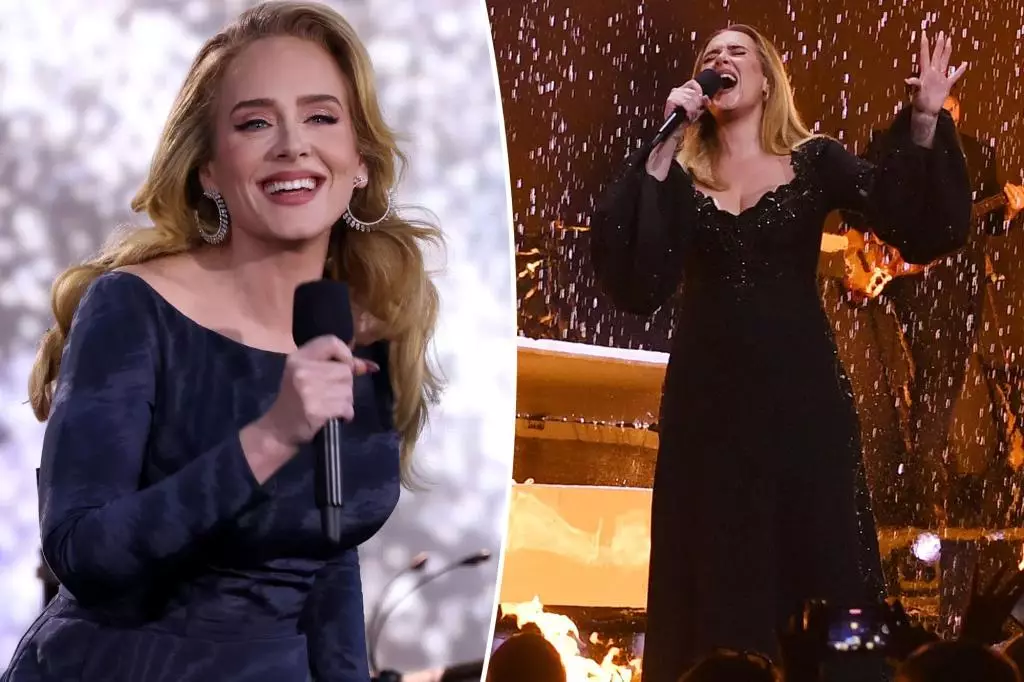The buzz surrounding Adele’s potential appearance at the 2026 Super Bowl halftime show is a testament to her monumental influence in the music industry and her cultural relevance. Rumors have heated up, fueled by insiders whispering that she might be the chosen artist for the coveted gig. Yet, these whispers remain just that—whispers. No official confirmation from credible sources confirms Adele has been booked; instead, we’re left to speculate and interpret available clues. This tentative position underscores the complexity of selecting a halftime performer, especially someone as iconic and discerning as Adele.
Despite her immense popularity, Adele has historically shunned the limelight of such large-scale spectacles. Her previous rejection of the Super Bowl in 2017 exemplifies her cautious stance towards the event’s perception. Adele’s candidness about her limitations—worrying she can’t dance or perform theatrically—raises questions about whether she truly wishes to participate in an environment that values spectacle over artistry. Yet, her attendance as a Super Bowl fan and her connection to Rich Paul, an influential sports agent, suggest a nuanced relationship with the event. Perhaps her hesitations are rooted in her authentic approach to music—preferring emotional resonance over spectacle—yet the allure of the Super Bowl’s massive audience remains undeniable.
Competing Contenders and Industry Dynamics
The competition to secure the halftime slot is fierce, with trendy names like Taylor Swift and Miley Cyrus circling as potential candidates. The NFL’s openness to other high-profile artists signifies a strategic effort to captivate diverse audiences and maximize viewership. Taylor Swift, with her vast fan base and cultural cachet, presents an alluring option that is often considered almost guaranteed to draw viewers. Interestingly, NFL insiders have hinted that Swift’s involvement is “a maybe,” with commissioner Roger Goodell expressing admiration for her talent but not confirming her booking.
Miley Cyrus offers a different appeal. Her record of staging memorable performances and her genre versatility could make her an intriguing choice to bring fresh energy to the halftime scene. However, despite her popularity, Cyrus has not yet performed on this stage, and her candid reinventions might challenge traditional expectations of halftime artistry.
What sets Adele apart amid these choices is her reputation for authenticity. Unlike Swift or Cyrus, who bring showmanship and theatricality, Adele’s strength lies in her soulful voice and heartfelt performances—traits that could modernize and elevate the halftime experience. Yet, her past reluctance hints at internal conflicts: does she see the event as a platform for musical artistry or as something that dilutes her craft? Her engagement with fans, including her witty remarks about attending Super Bowls for Rihanna or Travis Kelce, reveals a personality that’s both self-aware and unpretentious—characteristics that could either resonate powerfully or clash with the grandeur expected of a halftime performer.
The Power of Influence and Future Possibilities
Behind the scenes, powerful figures like Jay-Z and his Roc Nation agency wield considerable influence over the selection process. Their partnerships with the NFL craft a delicate dance between artistic integrity and commercial interests. Although the official announcement is typically made in September—leaving months of anticipation—the ongoing hints suggest that this year’s choice will be as unpredictable as it is high-stakes.
A trigger point in this ongoing saga is the notion that the NFL might prioritize star power, relevance, and audience engagement over traditional criteria. The league’s willingness to entertain diverse options highlights an evolution in what it means to be a halftime star. The emphasis appears to be less on genre and more on cultural impact and contemporary relevance, whether that means embracing a singer known for her emotional depth like Adele or a pop phenomenon like Swift.
In my opinion, Adele’s potential inclusion would symbolize a shift toward more authentic and artist-centric performances. Her music, rooted in storytelling and raw emotion, could redefine what live entertainment at the Super Bowl looks like. Furthermore, her connection with a sports agent and her past as an engaged fan imply genuine interest—not just a strategic booking—making the possibility of her stepping onto that stage more compelling than ever. Regardless of the outcome, the speculation itself hints at an interesting trend: the NFL recognizes the importance of artistry and authentic connection, even amidst the spectacle.
If Adele finally accepts the challenge, it might revolutionize the Super Bowl halftime show, shifting the focus back onto music that moves the soul rather than just dazzles visually. Her participation, therefore, would not merely be a celebrity cameo but a statement—a declaration that meaningful artistry can coexist with one of the world’s most watched sporting events. For fans and critics alike, the negotiation over her appearance underscores an evolving landscape where authenticity and impact eclipse mere showbiz spectacle.
